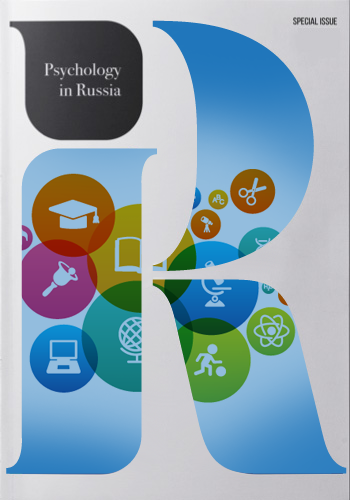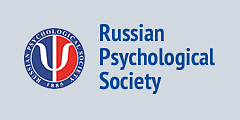Psychology in Russia: State of the Art, Moscow: Russian Psychological Society, Lomonosov Moscow State University, 2018, 4, 240 p.

2018
Volume 11 (04)
Volume 11 (04)
Education and Human Development
Guest editors:
Yulia Kovas (UK)
Yulia Kovas (UK)
Education and human development
-
Effortful Control in Primary Schoolchildren: Links with Personality, Problem Behaviour, Academic Achievement, and Subjective Well-Being
-
Academic Motivation of Elementary School Children in Two Educational Approaches — Innovative and Traditional
-
Comparing Spatial Ability of Male and Female Students Completing Humanities vs. Technical Degrees
-
Spouses’ Psychological States and Family Relations in Families with Natural and Induced PregnanciesPDF HTML5850“ CITE
Bokhan T. G., Terekhina O. V., ShabalovskayaM. V., Leshchinskaia S. B., Silaeva A. V., Naku E. A., Selita F., Agarkova L. A. (2018). Spouses’ Psychological States and Family Relations in Families with Natural and Induced Pregnancies. Psychology in Russia: State of the Art, 11 (4), 50-67.
copied
-
To Tell or Not to Tell: The Ethics and Law of Disclosing Health-Related Genetic Information to Family Members
-
The Role of Mathematical and Trait Anxiety in Mental Fatigue: an EEG Investigation
-
Language Proficiency in Preschool Children with Different Levels of Executive Function
-
The Role of Emotional Schemas in Anxiety and Depression among Russian Medical Students
-
From Rare Mutations to Normal Variation: Genetic Association Study of Mathematical, Spatial, and General Cognitive Abilities
-
Elaboration of Screening Scales for Early Diagnosis of Developmental Delay in Four- to Five-Year-Old Children in Russia
-
Cognitive and Non-Cognitive Predictors of the Unified State Exam Performance of Students from Schools with Regular and Advanced Mathematical CurriculaPDF HTML8236“ CITE
Voronin I. A., Ovcharova O. N., Bezrukova E. M, Kovas Yu. (2018). Cognitive and Non-Cognitive Predictors of the Unified State Exam Performance of Students from Schools with Regular and Advanced Mathematical Curricula. Psychology in Russia: State of the Art, 11 (4), 177-199.
copied
Personality psychology
-
Gender Differences in Interactions with Avatars of Diverse Ethnic Appearances
-
Development of Parental Competence Through Psychological and Pedagogical Support for Families in the Upbringing of Hearing-Impaired Children









